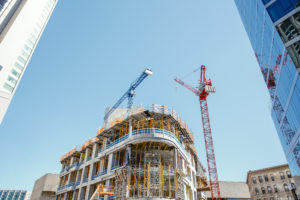 Some time back, I wrote about the City of Palo Alto’s struggles in addressing the amount of commercial development it should allow, in grappling with the ongoing disparity between employment growth and housing in Silicon Valley. Since then, city government has continued to wrestle with this problem, adopting a variety of tactics in its efforts to bridge this gap, including proposals intended to increase housing development, which I have also addressed in this blog. At a recent Palo Alto City Council meeting, however, the city reversed years of restraint when it scrapped its ceiling on downtown commercial development.
Some time back, I wrote about the City of Palo Alto’s struggles in addressing the amount of commercial development it should allow, in grappling with the ongoing disparity between employment growth and housing in Silicon Valley. Since then, city government has continued to wrestle with this problem, adopting a variety of tactics in its efforts to bridge this gap, including proposals intended to increase housing development, which I have also addressed in this blog. At a recent Palo Alto City Council meeting, however, the city reversed years of restraint when it scrapped its ceiling on downtown commercial development.
In a narrow vote, the Palo Alto City Council set aside an ordinance limiting downtown non-residential development to 350,000 square feet over its 1986 levels. While this action was consistent with a 2017 vote to remove this cap from the city’s comprehensive plan, it still provoked a substantial outcry, with feelings running high on both sides of the issue, illustrating the bigger dilemma facing Silicon Valley as a whole. “Permitting more office development will only increase [traffic cut throughs in residential areas and parking problems] and should not be undertaken until the City has deployed a proven-effective plan to improve traffic flow on our arterials and reduce cut-through traffic in neighborhoods,” wrote Greg Welch, a resident of Palo Alto’s Crescent Park neighborhood.
Still others fear that displacement of downtown housing will result from developers pushing forward with more profitable commercial projects. On the other side of the debate, those advocating for the elimination of the cap argue that doing so will encourage housing in the downtown area. “If you don’t allow some of the economic office buildings to be built, perhaps as mixed-use, there won’t be the money for housing,” Palo Alto Chamber of Commerce CEO Judy Kleinberg said. “If you get rid of the cap, you’re actually helping build housing downtown.”
Some contend that the cap unfairly “freezes” the downtown area, where ready access to mass transit and other services facilitates serving the transportation needs of business commuters without making traffic worse. According to Palo Alto City Councilman Adrian Fine, maintaining the downtown cap would shift commercial development towards other parts of Palo Alto, which may lack the transit and services infrastructure of the downtown area: “Future office growth will go anywhere else in the city.” Also chiming in, the Palo Alto Weekly’s editorial board called the council’s decision a setback for housing.
Notwithstanding the repeal of this cap, further development in Palo Alto will likely remain vigorously contested for the foreseeable future, and will undoubtedly be a factor in the next council election. In fact, substantial limits remain on commercial development in Palo Alto. The city continues to maintain an annual limit of 50,000 square feet on office and R&D development in its main commercial locations, while restricting the total of such development in the entire city to 850,000 square feet by the year 2030.
But are development caps a good long-term solution for the troubles associated with the jobs/housing imbalance, such as traffic congestion? “It’s not a perfect salve,” said David Blackwell, a land use partner with the law firm of Allen Matkins in San Francisco. “The problem with caps, in my view, is they’re blunt instruments.” Furthermore, Blackwell added, with respect to increased traffic, it “isn’t a local problem; it’s a regional problem.”.
Perhaps the solution lies in the approach advocated by State Senator Jon Wiener, whose SB 50 would prevent cities statewide from prohibiting high-density housing development near transit or employers. While such legislation is intended, among other things, to help mitigate the traffic problems associated with economic growth in California, its critics are not sanguine about how it would affect other aspects of our environment. According to an analysis published by the Embarcadero Institute, Palo Alto could add as many as 46,000 housing units and 90,000 vehicles in those areas regulated under this new law. Only time will tell.



